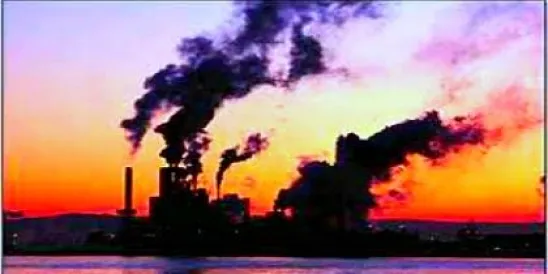The United States Environmental Protection Agency (EPA) announced on November 25, 2014 that it will lower the primary and secondary ozone National Ambient Air Quality Standards (NAAQS) to a level between 65 and 70 ppb. (EPA’s proposal, fact sheets, information on estimated benefits and costs, maps and tables, and other pertinent information are available at:
http://www.epa.gov/airquality/ozonepollution/actions.html#current
The proposed ozone NAAQS are significantly lower than the current standards, which are 75 ppb for both primary and secondary. EPA claims that the proposed updates will improve public health protection, particularly for children, the elderly, and people of all ages to have diseases such as asthma. The EPA also will accept public comment on retaining the current standard of 75 ppb or lowering the standard to 60 ppb.
EPA will take comment on the proposal for 90 days after publication in the Federal Register and will hold three public hearings in January 2015. It plans to issue a final decision by Oct. 1, 2015.
On November 26, 2014, EPA held a conference call for stakeholders. Acting Assistant AA for Air Janet McCabe made the following remarks:
Next week EPA will hold additional calls as well as two webinars, a webinar for states only on 12/2/14 at noon. A second webinar for stakeholders will be held on 12/4/14 at noon EST.
Key points covered in the announcement are:
The most important aspect of the basis is the science. There have been more than 1000 studies published since the last NAAQS revision. The Administrator’s judgment is informed by exhaustive review of science as well as recommendations of advisors. The Administrator is well aware of studies supporting levels as low as 60.
EPA is proposing an extension of the monitoring season in 33 states because a review of data shows that ozone can be elevated earlier in Spring and later later in Fall in many states. In some states, ozone levels have exceeded standards even in winter. The proposal is to make the monitoring season extension effective 1/1/17, and EPA is seeking comment on an effective date that would be one year earlier.
Secondary standard: EPA is proposing a secondary standard of 75 ppb. New studies add to the evidence that repeated exposure of trees can stunt growth. The proposed secondary standard corresponds to seasonal levels of exposure.
McCabe noted that ozone is disproportionately affecting lower income population because of less availability of medical support. She added that a majority of counties meet the proposed lower standard already and said that 35 states are already taking cost effective steps to minimize ozone. The CAA gives state plenty of time to plan for and meet the proposed standards. EPA will finalize the new standard by October of 2015, and state nonattainment designation will be due in October of 2017.
McCabe then closed the presentation segment and invited questions, as follows:
Q: Why not 60 ppb?
A: The standard level is not set by the administrator alone. In looking at all factors that she is required to consider, she felt that the range proposed is correct. Having said that, the level of 60 is still very much on the table and comments are requested.
Q: In past two years there have been major studies, most recently out of NYC, showing that ozone exposure is causing birth defects. Were those studies considered in the benefits assessment?
A: OAQPS says they were not included in the benefits assessment because they are relatively new and there is significant uncertainty associated with them. EPA included studies with most certainty for this proposal.
Q: Most studies show the San Joaquin Valley can’t meet the existing standard even with all vehicles off the road. How was regional economics considered?
A: McCabe says regional costs and benefits were considered separately and that CA is expected to have more time to meet the proposed levels because of the higher levels already there.
Q: What are primary sources of CO ozone, EGUs or cars or others?
A: McCabe says main contributors are VOCs and NOx and those come from fossil fuel combustion. In most areas that is from a mix of motor vehicles and industrial sources.
Q by Chris Salmi (NJ DEP): The secondary standard takes the 8 hour form?
A: Yes
Q: Pregnant women and prenatal individuals were not mentioned and they are most sensitive receptors. Why not?
A: EPA Scott Jenkins (OAQPS) says new studies are not peer reviewed and are not as robust so they were not considered for this proposal. Studies that were assessed for this proposal are in the EPA IRIS database. McCabe added that the science continues to evolve and it’s a transparent process so these studies will be added in the next review.
Q Will number of monitors be increased and will there be an assessment of benefits of only ozone and not combined with PM reductions?
A: monitor numbers will not be increased in this proposal. Benefits are developed using standard procedures. Inclusion of co-benefits is accepted practice in rigorous science procedures.
Q: EGUs are arguing that a 60-65 ppb level is approaching background and that much ozone is being transported from foreign countries. Have you looked at long distance and foreign contributions?
A: Yes, in the preamble those are discussed. However, the standard is about the ozone level that affect human health, and the sources and ways to handle contributions are to be discussed in the state SIPs.
Q How does this proposal compare to other country standards?
A: There is a range of standards in countries, some aspirational and some more rigid. The WHO guideline is 50 ppb and many countries are working toward that level.
Q: Are issues of impact of the standard on the economy considered?
A: This rule is about the level of standard and the CAA doesn’t allow cost to be considered.
Q: The proposal says the best way to do a secondary standard is a seasonal average but EPA proposes an 8 hour standard. Why not use the seasonal average?
A: Consensus is that the seasonal W126 metric is appropriate but it seems that states should be able to use the same format for secondary standard as they do for the primary standard to make the process easier. EPA is taking comments on that process.
Q (API): The 2025 attainment maps identify 9 counties exceeding 70 ppb. Why are metropolitan areas in that map? For example, New York City is shown as 74 but is not on the map.
A: These maps are based on monitoring data and so the current data are reflected. Rather than speculate on future nonattainment, we focused on monitors themselves.
Q: Why the proposed form of the secondary standard? A: EPA is taking comment on whether to make the form the same as for the primary standard.
Q: Is EPA considering extending ozone season in rural areas where tribes are receiving upwind urban transport?
A: That occurs in several areas and we are proposing to extend the season in those areas.
Q: Is EPA considering revising exceptional events rule to include transport from foreign countries?
A: EPA is taking comment on that issue and looks forward to receiving comments




 />i
/>i